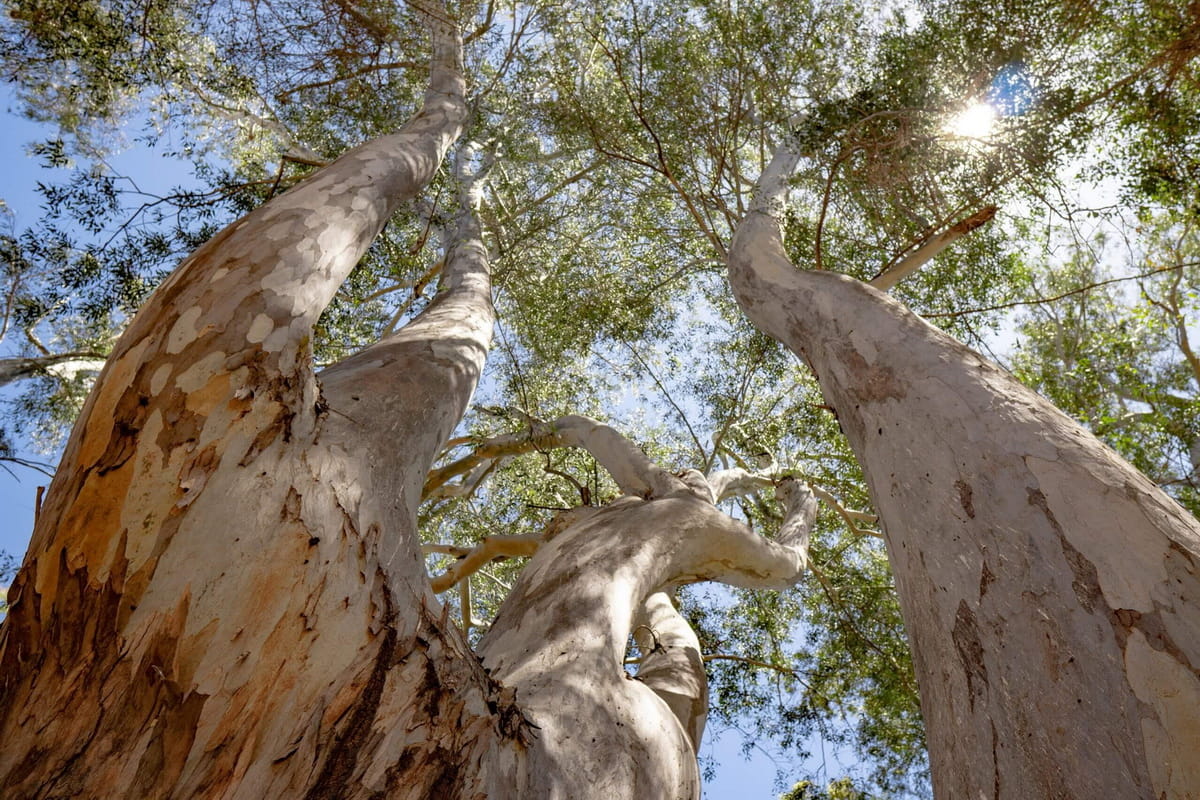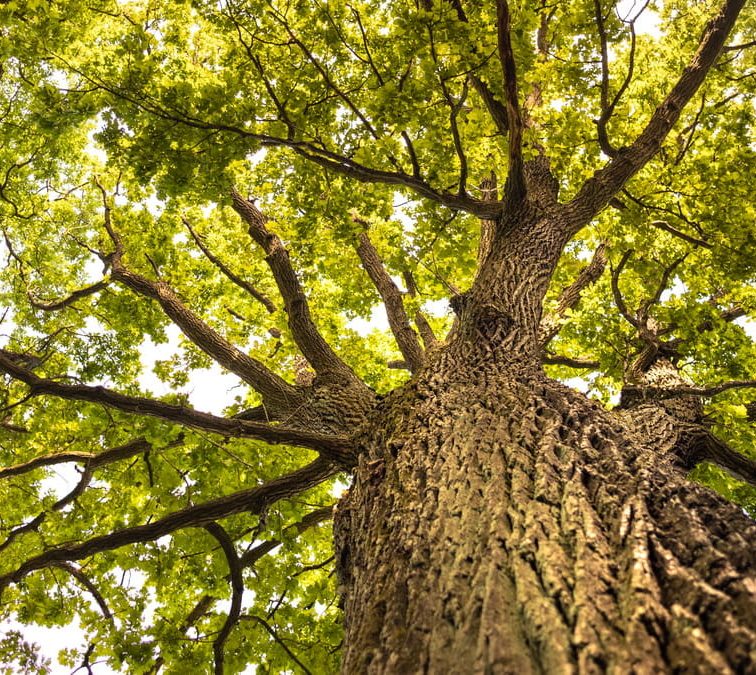Eucalyptus, a genus originating in Australia, comprises over 700 species. Notably, the Eucalyptus regnans can soar up to 100.5 meters (330 feet), making it one of the world’s tallest trees. These trees are not only vital to Australia’s ecology but have also spread globally due to their fast growth and diverse uses.
Eucalyptus leaves, a primary food source for koalas, are uniquely adapted to the Australian landscape. The oil extracted from these leaves has been used in medicine since the 1780s, and the trees’ ability to recover from fires highlights their resilience in challenging environments. This article will delve into fun facts about eucalyptus, revealing more about these remarkable trees and their multifaceted role in nature and culture.
1. Global Spread of Eucalyptus: From Australia to the World
Eucalyptus trees, originally exclusive to Australia, began their global journey in 1777 when seeds were first sent to Europe. By the 1850s, they were introduced in California during the Gold Rush for their fast-growing timber. Today, over 700 species flourish across various continents, adapting to diverse climates.
Their versatility in wood production, essential oil, and even as windbreaks has led to their widespread cultivation. However, their introduction has also raised ecological concerns in non-native regions, particularly in California and Portugal, where they can outcompete local species.
2. Koalas’ Favorite: The Role of Eucalyptus in Their Diet
Koalas have a highly specialized diet, consuming about 500 grams of eucalyptus leaves daily. They feed on a select 30-50 species out of over 700, relying on their high-fiber, low-protein content. Eucalyptus leaves contain toxic compounds like phenolic and terpenoid, but koalas have evolved a unique digestive system and liver enzymes to neutralize these toxins.
This diet provides not only nourishment but also hydration, crucial in the arid Australian environment where these marsupials live.
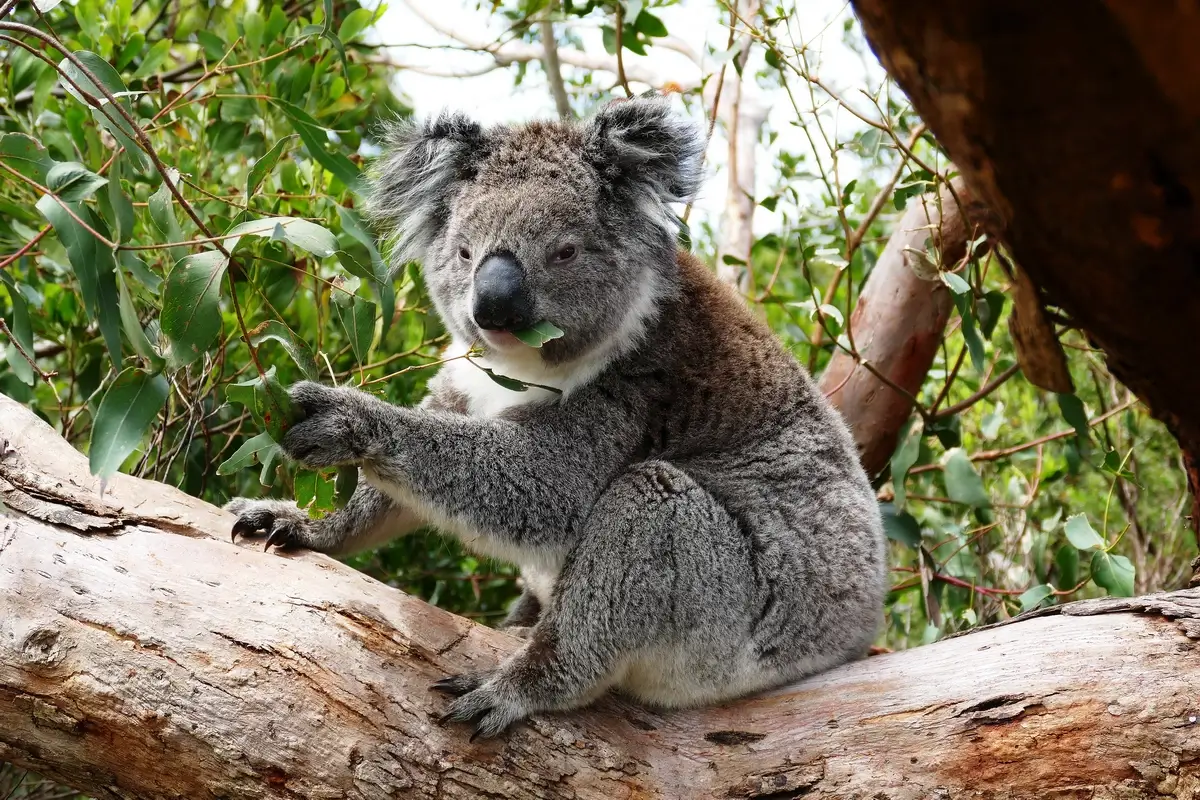
Image: blikk.hu
3. Eucalyptus Oil: From Aromatherapy to Medicine
Eucalyptus oil, derived from the tree’s leaves, has been used medicinally since at least the 1780s. Its primary component, cineole, is known for its antimicrobial and anti-inflammatory properties. During World War I, eucalyptus oil was a key antiseptic for treating wounds.
Today, it’s widely used in cough syrups, lozenges, and inhalants for its ability to clear respiratory passages. In aromatherapy, it’s prized for its refreshing scent, promoting relaxation and mental clarity.
4. Fire Resilience of Eucalyptus: Surviving Wildfires
Eucalyptus trees are remarkably adapted to fire-prone environments. Some species, like the Eucalyptus obliqua, can resprout from lignotubers post-fire, ensuring survival even after intense wildfires. Their leaves contain oils that can exacerbate fires, yet this plays a role in their life cycle by triggering seed germination and clearing competing vegetation.
This fire-adaptive strategy is crucial in ecosystems where fires are frequent, highlighting the evolutionary resilience of these trees.

Image: mongabay.com
5. The Growth Speed of Eucalyptus: Nature’s Skyscrapers
Eucalyptus trees are among the fastest-growing in the world. Some species, like the Eucalyptus regnans, can grow up to 2.5 meters annually, reaching towering heights over 90 meters in ideal conditions. This rapid growth, combined with their hardiness, makes them valuable for timber and reforestation projects.
In fact, the Blue Gum (Eucalyptus globulus), popular in pulp production, can grow from seedling to harvestable tree in just 10-15 years. This growth rate is not only impressive but also essential in combating deforestation and providing sustainable wood resources.
6. The Many Species of Eucalyptus: A Diverse Genus
With over 700 species, eucalyptus trees exhibit remarkable diversity. They range from small, bushy shrubs to towering giants like the Eucalyptus regnans, the tallest flowering plant on Earth. This diversity is reflected in their adaptability to different environments, from wetlands to mountains.
Each species has unique characteristics, like the rainbow eucalyptus (Eucalyptus deglupta), known for its multi-colored bark, and the snow gum (Eucalyptus pauciflora), which endures cold, alpine conditions. This variety illustrates the evolutionary adaptability and ecological significance of the eucalyptus genus.
7. Eucalyptus in Carbon Sequestration: Climate Warriors
Eucalyptus trees play a crucial role in carbon sequestration. Their rapid growth and large biomass enable them to absorb significant amounts of carbon dioxide from the atmosphere, making them valuable in climate change mitigation.
A study in Ethiopia showed that Eucalyptus saligna plantations could sequester up to 149.4 tonnes of carbon per hectare over 15 years. However, their high water usage and potential to disrupt local ecosystems must be balanced against their carbon sequestration benefits, especially in non-native regions.
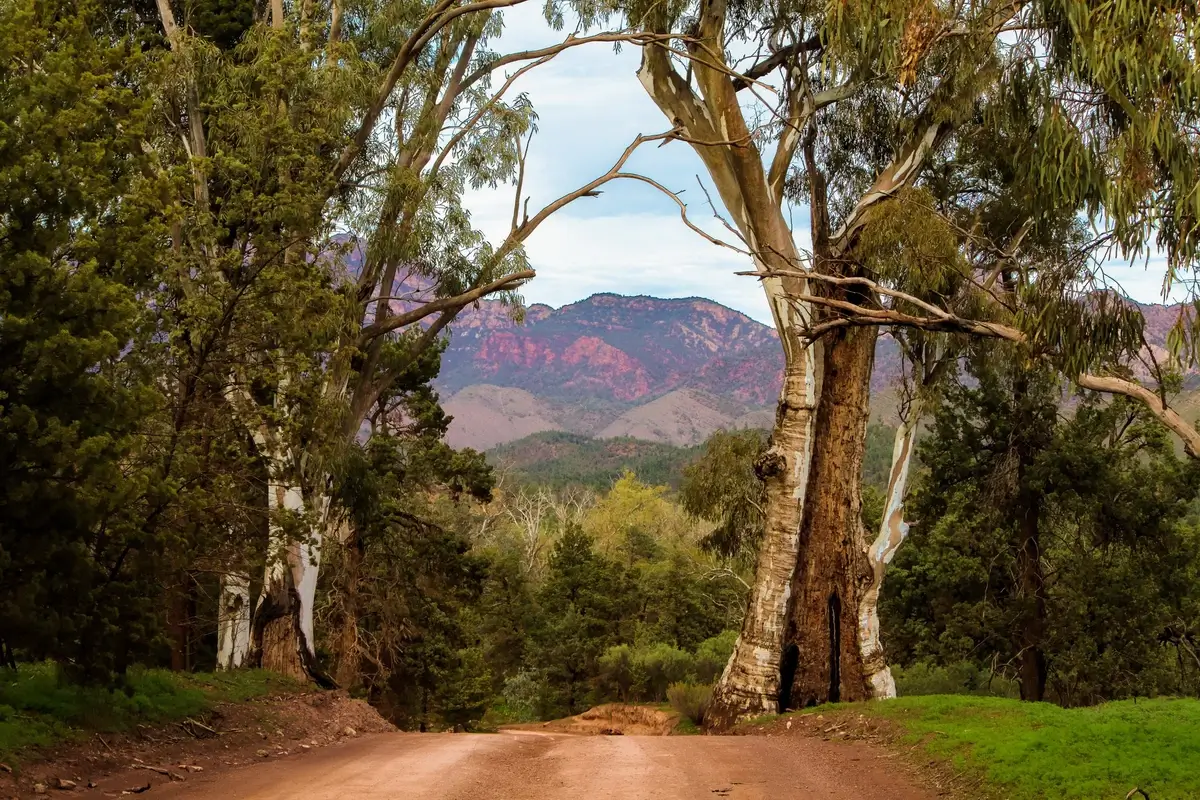
Image: rare-gallery.com
8. Historical Uses of Eucalyptus: Traditional Healing
Eucalyptus has a long history of medicinal use, dating back to Indigenous Australians who used eucalyptus leaves for wound healing and fever reduction. In the late 18th century, its medicinal properties gained global recognition.
Eucalyptus oil, with its antiseptic and anti-inflammatory qualities, was used extensively during the 1918 influenza pandemic as an inhalant and a disinfectant. Today, these traditional uses have been validated by scientific research, confirming the antibacterial and antiviral properties of eucalyptus.
9. Eucalyptus in Construction: A Builder’s Favorite
Eucalyptus wood, known for its durability and strength, is highly sought after in construction. Its dense, hard timber makes it resistant to rot and termites, ideal for flooring, furniture, and structural elements.
In Brazil, for instance, Eucalyptus grandis is widely used in the construction industry. The wood’s versatility and sustainability, given the tree’s rapid growth rate, have made it a favored choice among architects and builders globally, contributing to the sustainable construction movement.
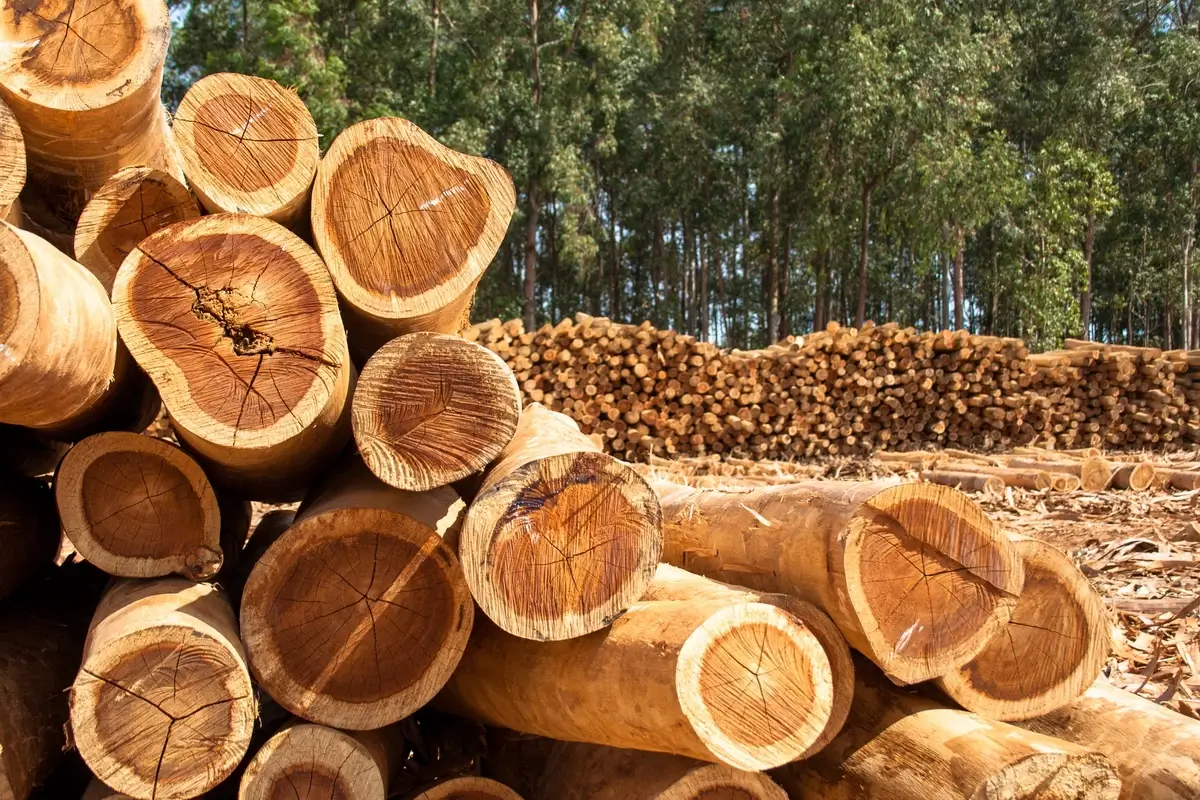
Image: news.sap.com
10. The Unique Aroma of Eucalyptus: Nature’s Perfumery
The distinct, refreshing aroma of eucalyptus is unmistakable. This scent, primarily due to the compound cineole or eucalyptol, has a minty, cooling quality. It’s not only pleasant but also therapeutically significant.
Eucalyptus oil, used in aromatherapy, is known for enhancing mental clarity and relieving stress. This fragrance is so unique that it’s often used in perfumes, lotions, and candles, capturing the essence of the Australian wilderness in products worldwide.
11. Record Heights: Tallest Eucalyptus Trees Documented
Eucalyptus trees are among the tallest trees in the world. The record-holder, a Eucalyptus regnans known as ‘Centurion’ in Tasmania, stands at an astounding 100.5 meters (330 feet).
These giants grow incredibly fast, with some species capable of reaching 60 meters in just 20 years. Their towering heights are not just a natural wonder but also play a crucial role in their ecosystems, providing habitat and influencing local microclimates.
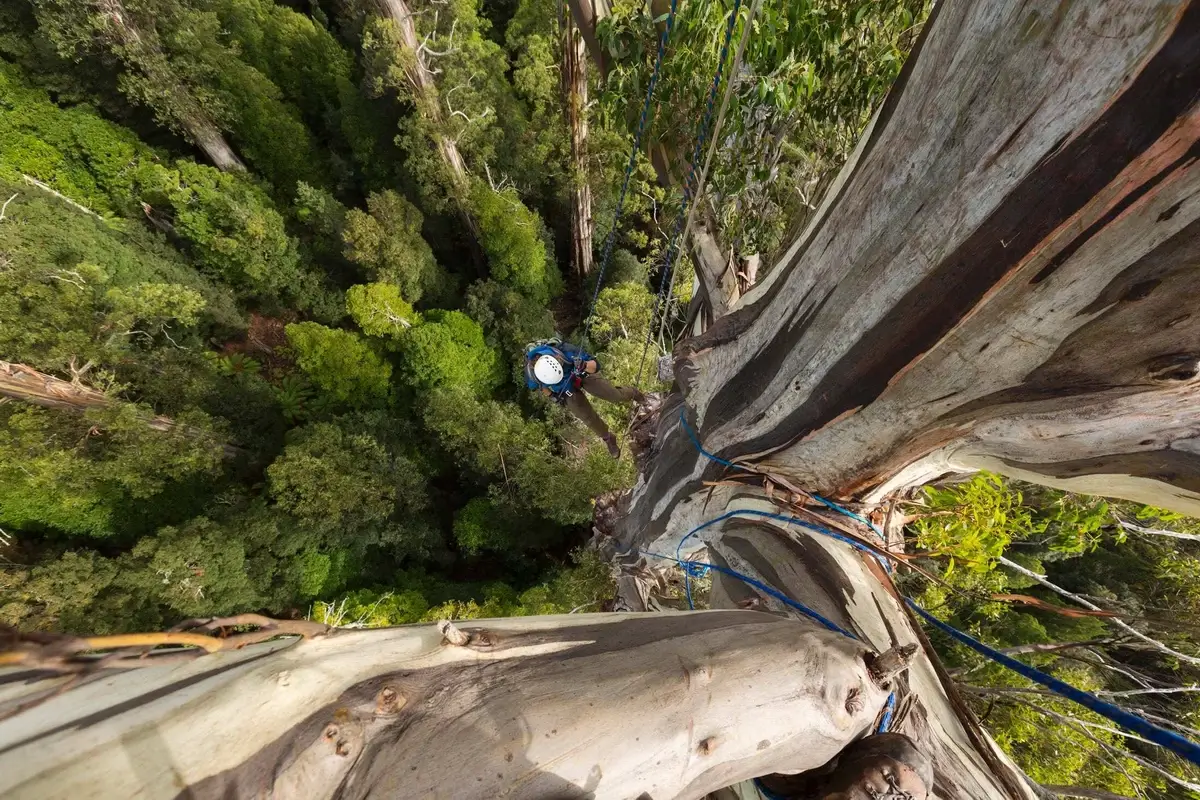
Image: medium.com
12. Eucalyptus in Art and Literature: Cultural Impact
Eucalyptus has a profound presence in art and literature, symbolizing the Australian landscape. Artists like Hans Heysen have famously depicted these trees, capturing their unique form and spirit. In literature, eucalyptus often appears as a symbol of Australian identity and the natural world, featuring in works by authors like Murray Bail.
These cultural representations highlight the tree’s significance beyond its physical presence, embedding it deeply in the artistic and literary tapestry of Australia.
13. Eucalyptus and Water Use: Environmental Effects
Eucalyptus trees are known for their high water consumption, a trait that impacts their surrounding environments. This characteristic enables them to survive in arid conditions, but it can also lead to decreased water availability in non-native ecosystems.
For example, in South Africa, eucalyptus plantations have significantly reduced stream flow. This aspect of eucalyptus ecology requires careful consideration, especially in areas where water resources are limited.
14. Eucalyptus in Honey Production: A Sweet Impact
Eucalyptus trees are not only ecological powerhouses but also key players in honey production. Certain species of eucalyptus, like the Eucalyptus globulus, produce nectar that is highly sought after by bees. The resulting eucalyptus honey is known for its unique flavor and therapeutic properties, often containing traces of the tree’s essential oils.
In regions like Tasmania and California, eucalyptus honey contributes significantly to the local apiculture economy. This relationship highlights the tree’s role in supporting biodiversity and contributing to sustainable agricultural practices.
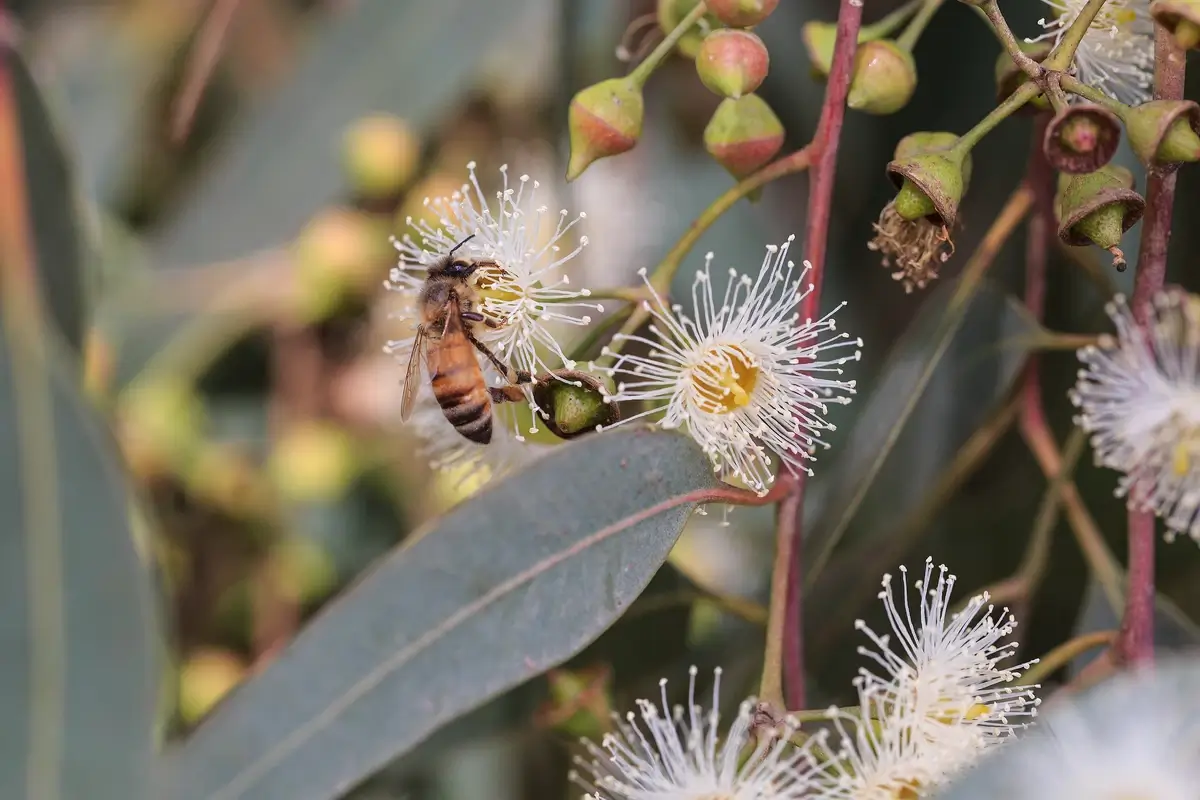
Image: wildflowermeadows.com
15. The Vibrant Bark of Eucalyptus: A Spectrum of Colors
Eucalyptus trees are not just ecological marvels; they are also visually stunning, particularly their bark. The most striking example is the rainbow eucalyptus (Eucalyptus deglupta), whose bark peels away in strips to reveal a bright, multi-colored trunk.
The varying colors, from green and blue to orange and purple, change as the bark matures and peels, creating a living art piece. This vibrant display is a beautiful reminder of the diversity and beauty found in nature.

Image: apartmenttherapy.com
FAQ
How is eucalyptus unique?
Eucalyptus is unique due to its remarkable adaptability, rapid growth rate, and diverse applications. Over 700 species range from small shrubs to towering trees, with some like Eucalyptus regnans reaching up to 100 meters. Eucalyptus leaves contain oil used in medicine, aromatherapy, and industry. Additionally, these trees have a distinctive relationship with fire, with some species thriving after wildfires due to their fire-adaptive traits.
How old is the oldest eucalyptus?
The age of the oldest eucalyptus trees can be difficult to determine precisely due to factors like forest fires and logging. However, some eucalyptus trees in Australia are believed to be over 500 years old. Eucalyptus trees generally have a long lifespan, with many species living several hundred years under favorable conditions.
Why do people love eucalyptus?
People love eucalyptus for its numerous benefits and uses. Its oil is valued for medicinal properties, helping relieve symptoms of colds, coughs, and respiratory ailments. The scent of eucalyptus is also popular in aromatherapy for its calming and refreshing effects. Additionally, the trees’ fast growth makes them important for timber and environmental conservation efforts.
What’s eucalyptus good for?
Eucalyptus is good for various purposes, including medicinal, environmental, and industrial uses. Medicinally, eucalyptus oil is used for its antiseptic, antimicrobial, and anti-inflammatory properties. Environmentally, these trees are effective in carbon sequestration and reforestation projects. Industrially, they are used for timber, pulp for paper, and as a source of renewable energy.
Why don’t bugs like eucalyptus?
Bugs don’t like eucalyptus because its leaves contain potent essential oils that are natural insect repellents. These oils, particularly eucalyptol, are unappealing and even toxic to many insects, making eucalyptus a natural choice for pest control in gardens and homes.
What is the rarest eucalyptus tree?
The rarest eucalyptus tree is the Eucalyptus morrisbyi, or Morrisby’s Gum, native to Tasmania. It’s listed as critically endangered, with only a few natural stands remaining. Conservation efforts are underway to protect and restore its population due to its limited distribution and the threat of habitat loss.
Does eucalyptus bloom?
Yes, eucalyptus trees do bloom. They produce flowers that lack petals but have a fluffy appearance, consisting of a cluster of stamens. These flowers are often brightly colored and attract a variety of pollinators, including bees, birds, and insects. The flowering season varies among species and environments.
Why does eucalyptus smell so good?
Eucalyptus smells so good primarily due to a compound called cineole or eucalyptol in its leaves. This compound gives eucalyptus its distinctive minty, refreshing aroma. This scent is not only pleasing but also has therapeutic properties, making it popular in aromatherapy and relaxation products.
How long does real eucalyptus live?
The lifespan of real eucalyptus trees varies widely among species. Many species can live for several decades, while some of the larger species, under ideal conditions, can live for over 250 years. Factors like environmental conditions, fire, disease, and human activity impact their longevity.


